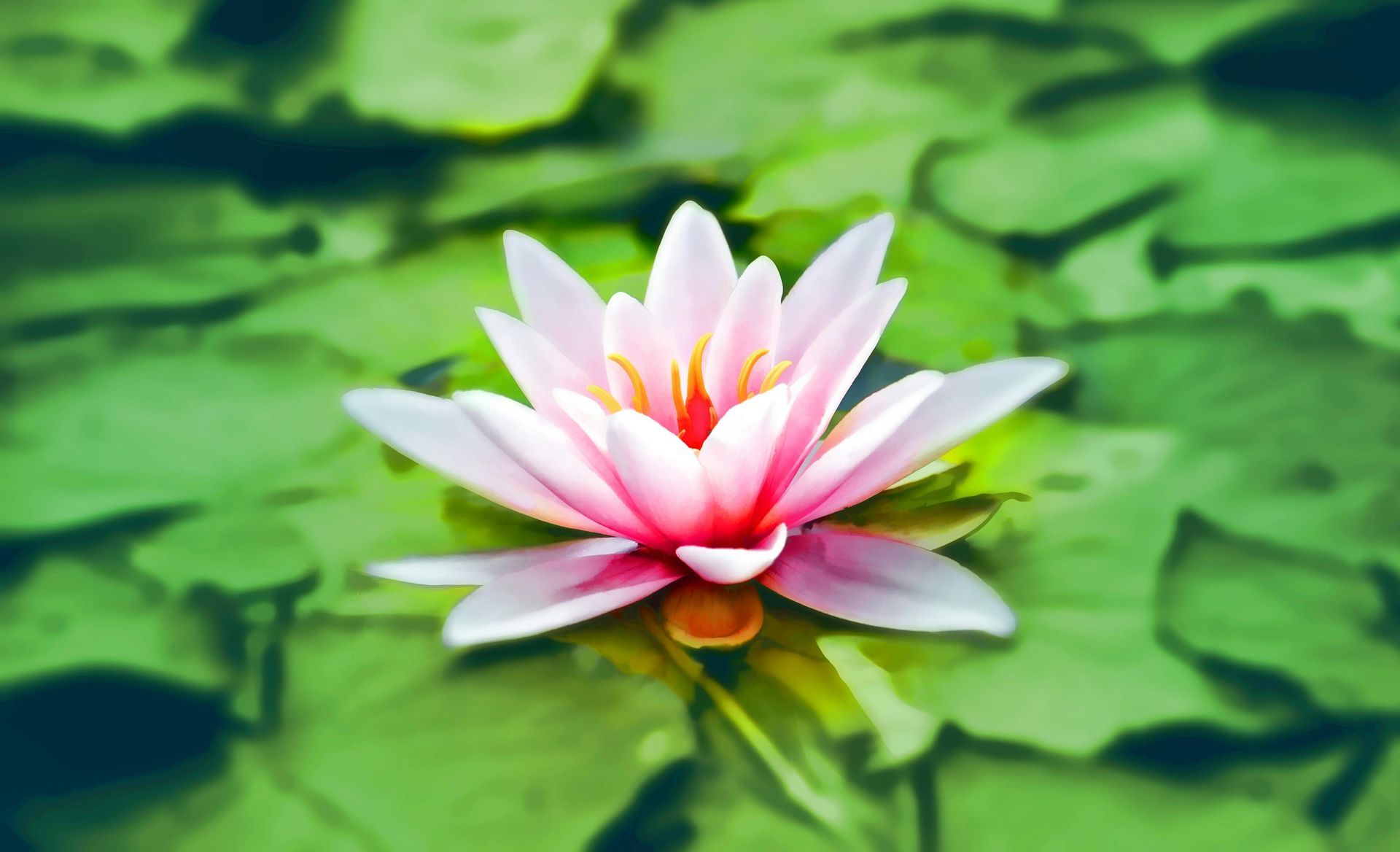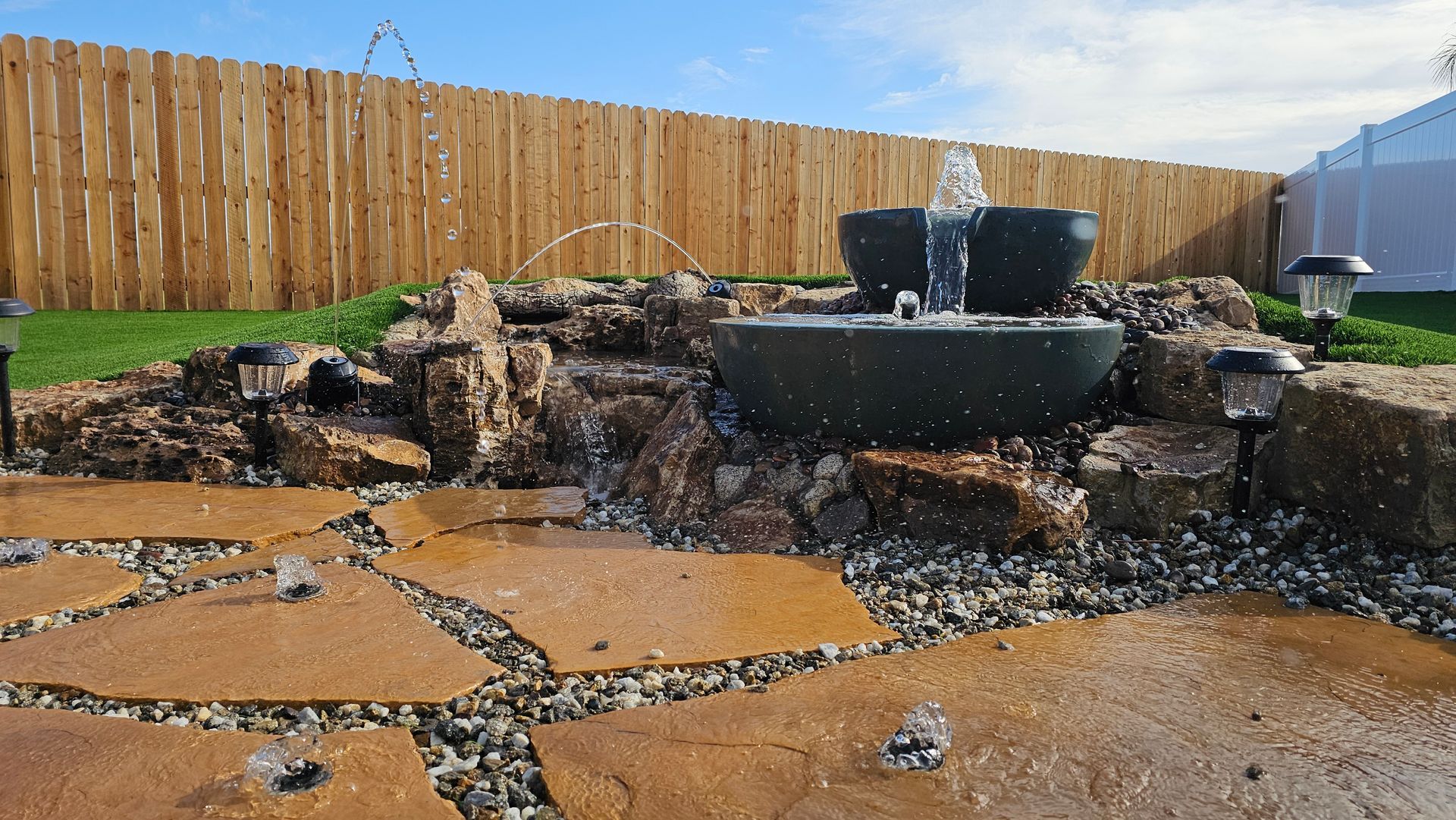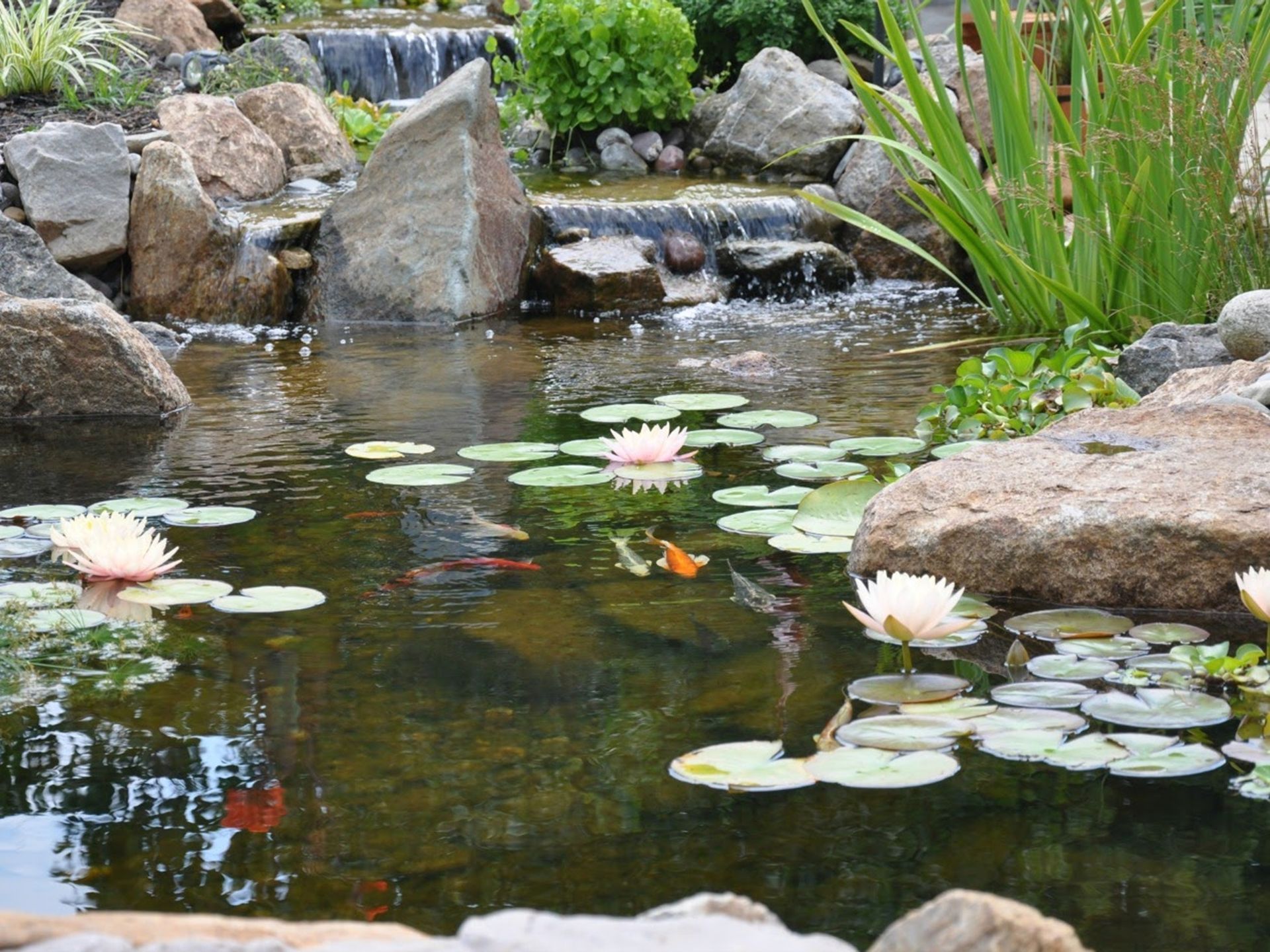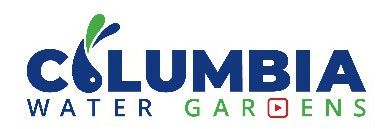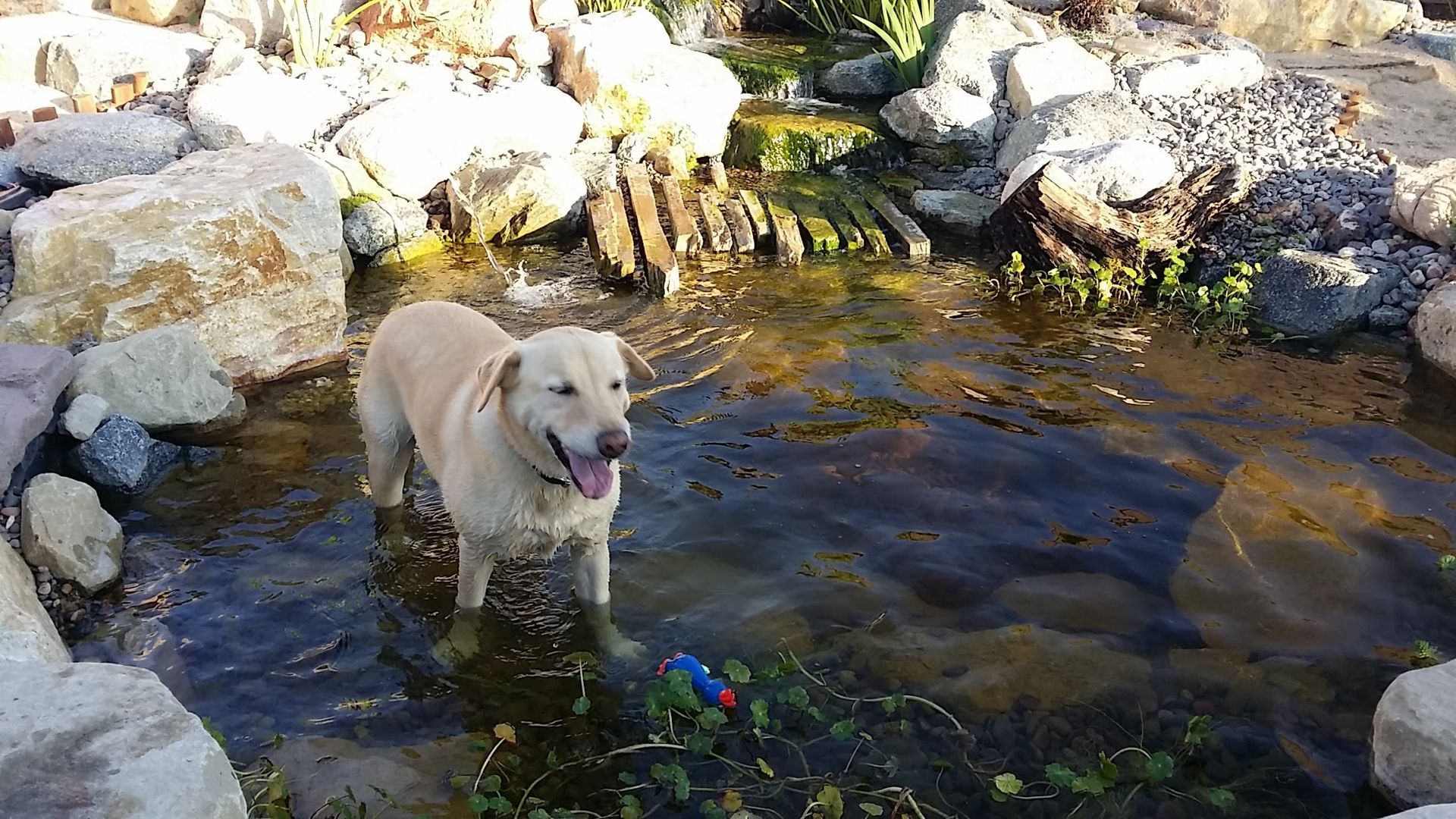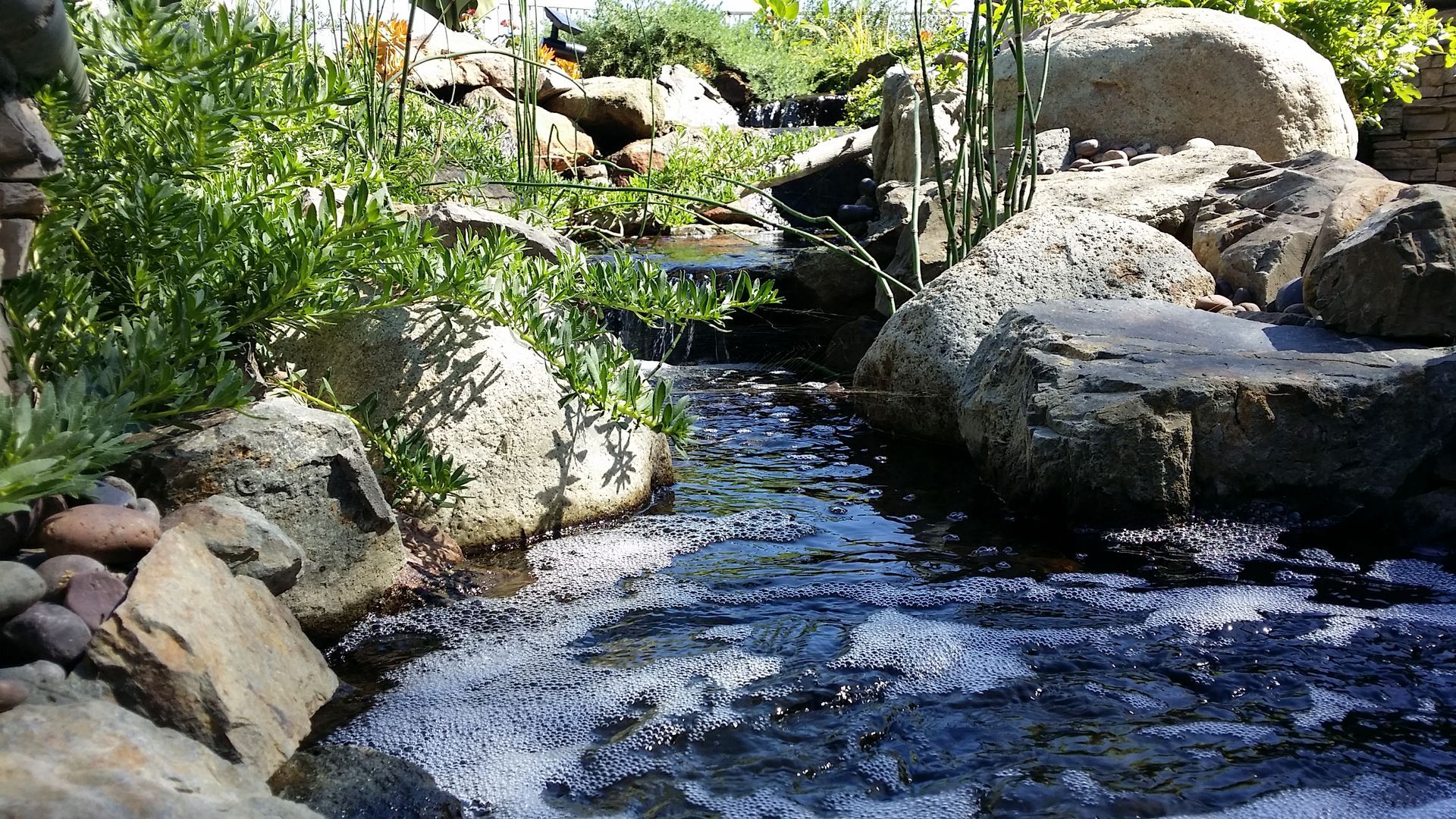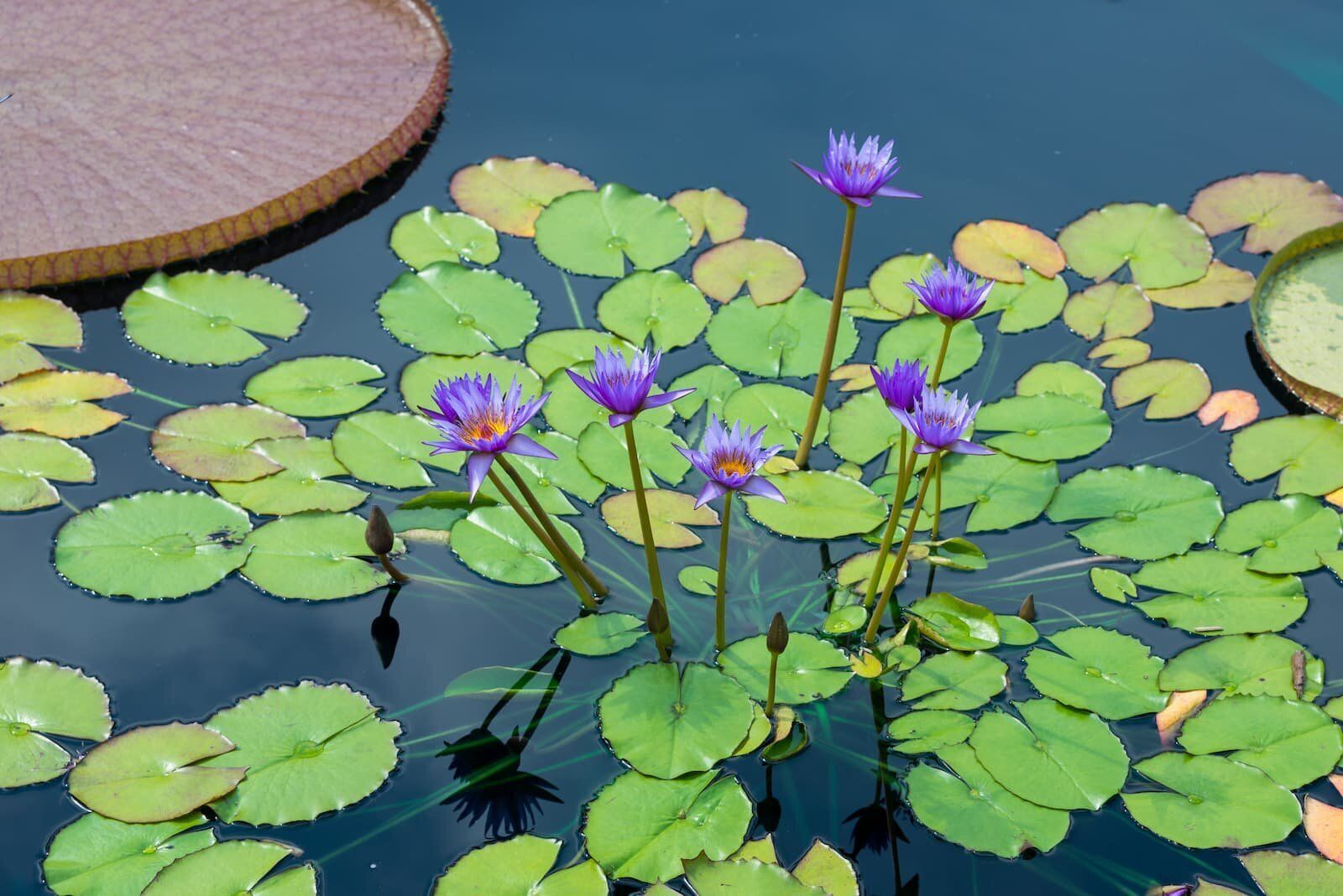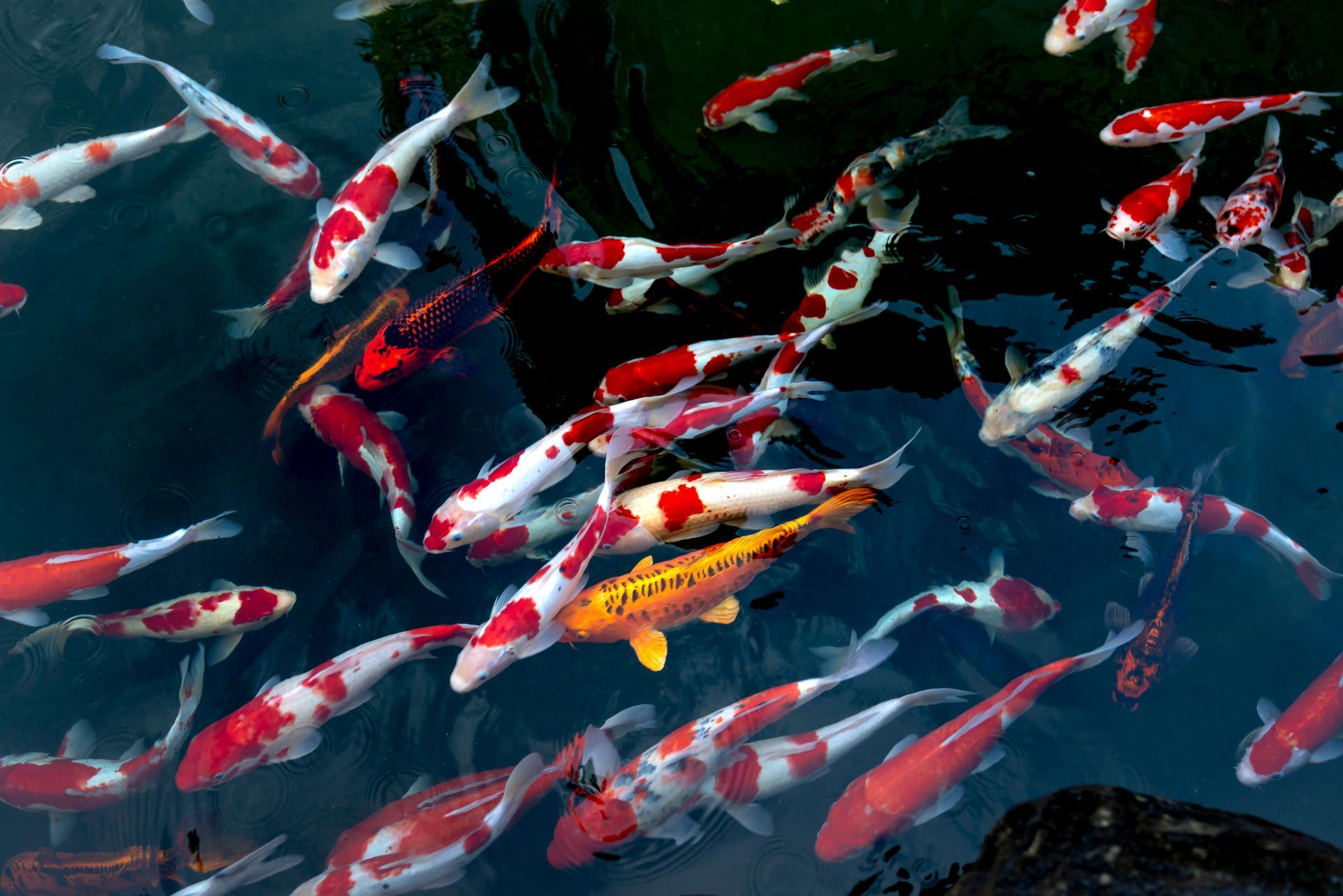Wetland Filters - Why whey work
Working with nature, not against it.
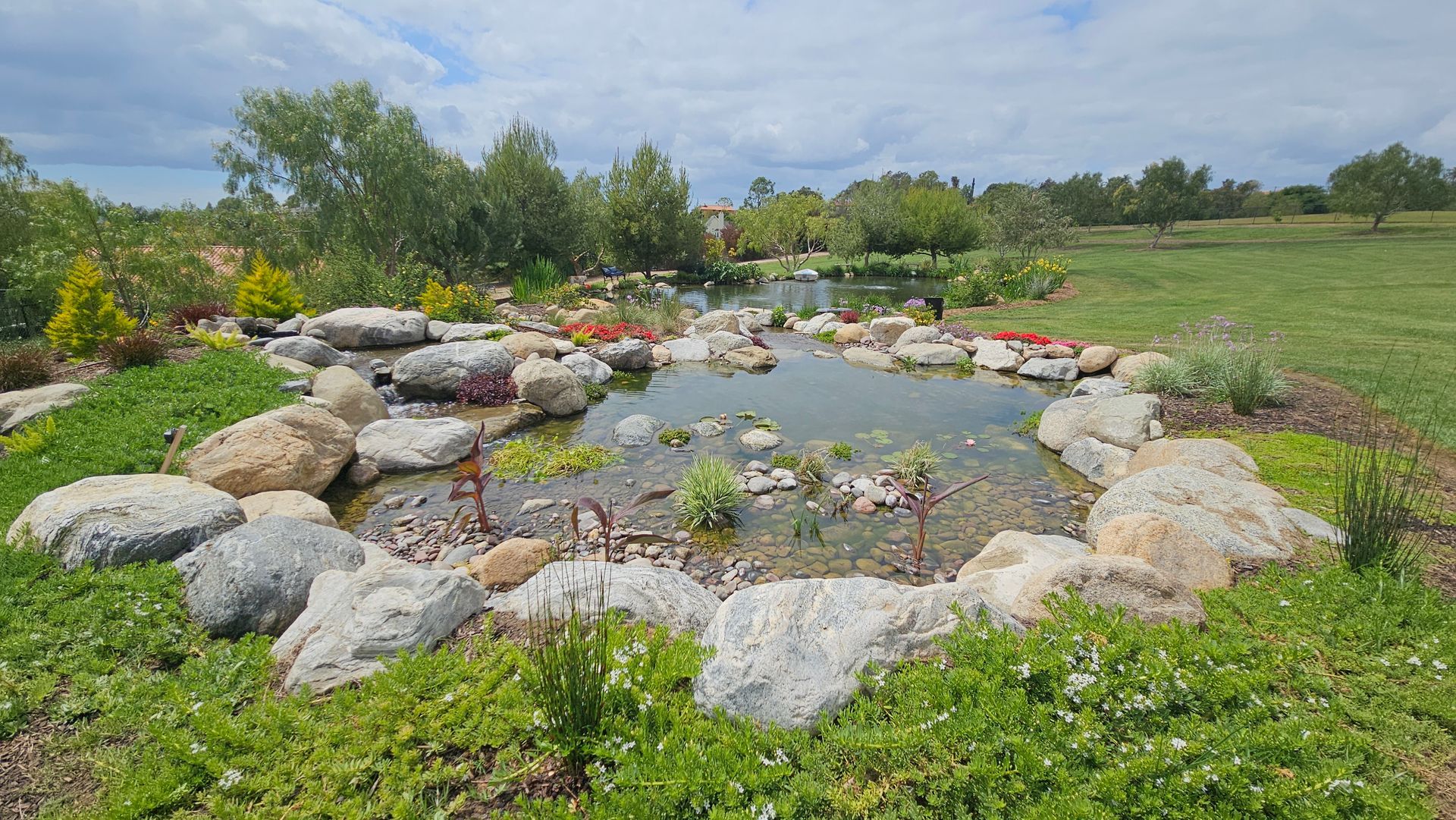
We've been installing wetland filters (also called constructed wetlands) for many years, and unless the pond we install for you is small, we're very likely to install a wetland filter for you.
Let's dig into what a wetland filter is, what it does, and how you will benefit from it on your pond or lake.
Introduction
Maintaining crystal-clear water and healthy koi fish requires an effective filtration system. While traditional mechanical and biological filters have long been the standard, wetland filtration systems are gaining popularity among pond enthusiasts for their natural approach to water purification. These systems mimic nature's own cleaning processes, offering numerous benefits for koi ponds. In this comprehensive guide, we'll explore how wetland filtration works and the many advantages it brings to your aquatic ecosystem.
What Is Wetland Filtration?
Wetland filtration, also known as constructed wetlands or bog filtration, is a natural filtration method that uses aquatic plants, beneficial bacteria, and specialized substrates to clean pond water. Inspired by natural wetland ecosystems, these systems transform waste into nutrients that feed plants rather than algae.
A constructed wetland typically consists of:
- A shallow area separate from but connected to the main pond
- A base layer of gravel or specialized filtration media
- Various aquatic plants with submerged root systems
- A slow, steady water flow from the pond through the wetland and back
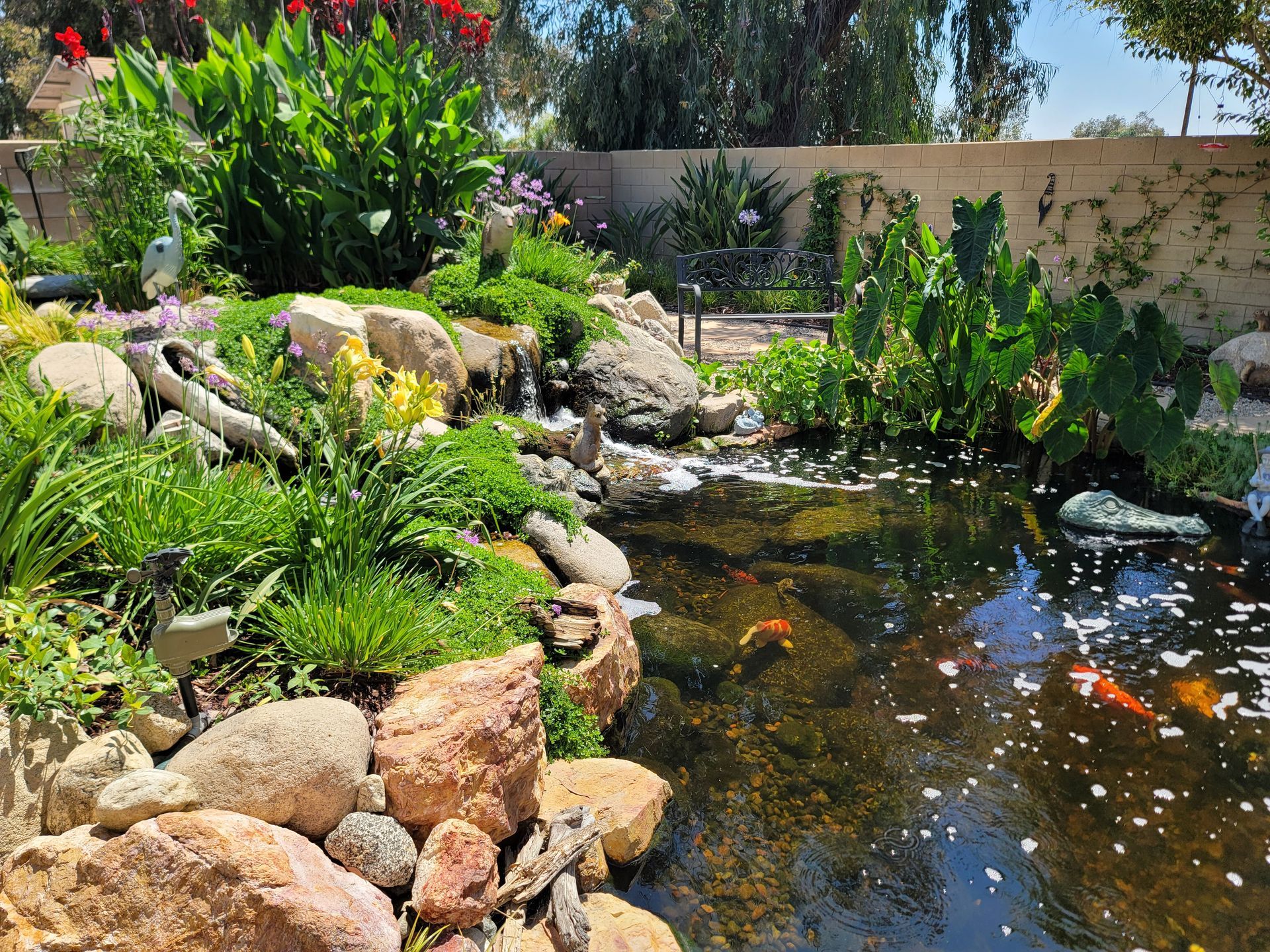
Key Benefits of Wetland Filtration for Koi Ponds
1. Superior Biological Filtration
Wetland filtration excels at biological filtration—the process of converting harmful ammonia and nitrites produced by fish waste into less harmful nitrates. The extensive root systems of wetland plants create an ideal environment for beneficial bacteria to colonize, significantly increasing the biological filtration capacity of your pond system.
These bacteria break down waste products through the nitrogen cycle, preventing the buildup of toxins that can harm koi. Research shows that wetland systems can reduce ammonia levels by up to 90% compared to conventional filters alone.
2. Natural Water Clarity Enhancement
One of the most noticeable benefits of wetland filtration is improved water clarity. Wetland plants and their associated microorganisms excel at removing suspended particles that cause cloudy water. As water flows slowly through the substrate and plant roots, fine particles become trapped and eventually broken down.
The result is water clarity that rivals or exceeds that achieved by mechanical filters, without the need for frequent cleaning or replacement of filter media.
3. Algae Control and Prevention
Koi pond owners are all too familiar with algae problems. Wetland filtration offers a natural solution through nutrient competition. Algae blooms occur when excess nutrients (primarily nitrogen and phosphorus) build up in pond water.
Wetland plants are nutrient-hungry and quickly absorb these same nutrients, effectively starving algae of its food source. Many pond owners report significant reductions in string algae and green water problems after installing wetland filtration systems.
4. Reduced Maintenance Requirements
Traditional filtration systems require regular maintenance, including backwashing, media replacement, and cleaning. Wetland filtration systems, once established, require minimal maintenance:
- No filter media to replace
- No mechanical parts to clean or repair
- Occasional plant trimming and division (which provides new plants)
- Significantly reduced pump cleaning requirements
This low-maintenance approach saves time and money while providing consistent filtration performance.
5. Enhanced Oxygenation
Healthy koi require well-oxygenated water. Wetland filtration systems contribute to oxygen levels in several ways:
- Plant photosynthesis produces dissolved oxygen
- Water movement over varied surfaces increases gas exchange
- Expanded surface area from plant roots supports aerobic bacteria
These factors create an oxygen-rich environment that benefits both koi and beneficial bacteria populations.
6. Natural pH Stabilization
Maintaining stable pH levels is crucial for koi health. Wetland systems naturally buffer pH fluctuations through:
- Mineral exchange in substrate materials
- Biological processes that consume and release carbon dioxide
- Decomposition of organic matter in controlled environments
This natural buffering helps maintain pH within the optimal range for koi (7.0-8.6) without chemical additives.
7. Temperature Moderation
Extreme temperature fluctuations can stress koi fish. Wetland filtration areas help moderate pond temperatures by:
- Providing shaded areas from emergent plants
- Adding water volume to the overall system
- Creating varied depth zones with different temperature profiles
This temperature stabilization is particularly beneficial during hot summer months when oxygen levels can drop in warm water.
8. Aesthetic and Ecological Value
Beyond their functional benefits, wetland filtration zones add beauty and ecological diversity to koi ponds:
- Colorful flowering plants create visual interest
- Various plant heights add vertical dimension
- Attract beneficial wildlife like dragonflies, which help control mosquitoes
- Create microhabitats for beneficial organisms

Many pond owners find that the wetland becomes a focal point of their water feature, complementing the beauty of their koi pond.
Designing an Effective Wetland Filtration System
To maximize the benefits of wetland filtration for your koi pond, consider these design elements:
Size and Proportions
For optimal filtration, the wetland area should be approximately 15-30% of the total pond surface area. Larger wetlands provide better filtration but require more space. The minimum recommended size is about 15 square feet for small ponds that are about 12 feet x 15 feet.
Plant Selection
Choose a variety of aquatic plants with different root structures and nutrient requirements. An ideally planted wetland has blooms all year. While we recognize that this isn't possible in areas that freeze over or are covered by snow, in more moderate environments such as the southwest where I'm from, trust me, it's possible. Think about it like this. It takes a lot of energy to produce a bloom. Makes sense, right? If your plants are blooming, then the energy that it takes to produce that bloom comes from nutrient. The wetland draws nutrient from the pond, diverting it from algae, and transfers it to the plant. The result is a clear, clean pond.
Deep-rooted plants: Cattails, bulrushes, and iris for extensive filtration
Shallow-rooted plants: Water celery, pennywort, and water forget-me-not
Floating plants: Water hyacinth and water lettuce (in warmer climates)
Using native species adapted to your climate will ensure better performance and prevent potential invasive issues.
Water Flow Considerations
Water should flow slowly and evenly through the wetland area. A flow rate of about 50-100 gallons per hour per square foot of wetland surface provides optimal filtration while allowing sufficient contact time between water and plant roots. There have been a lot of studies on this and this science is real. We design all our wetlands with this in mind.
Integrating Wetland Filtration with Existing Systems
You don't need to abandon your current filtration setup to benefit from wetland filtration. Many pond owners successfully combine approaches. In fact, the pond in the cover photo has an Aqua Ultraviolet Ultima 2 30,000 bead filter and a 240 watt UV with ozone. These measures were installed before we installed the wetland, and alone they weren't enough. Combines with the wetland, this pond flourishes.
Use mechanical pre-filters to remove large debris before water enters the wetland
Position the wetland as a polishing filter after traditional biological filtration
Incorporate UV clarifiers for additional algae control if needed
This integrated approach often provides the best of both worlds: the reliability of conventional filtration with the enhanced benefits of natural systems.
Conclusion
Wetland filtration offers koi pond owners a sustainable, low-maintenance approach to water quality management that works harmoniously with nature. By harnessing the power of aquatic plants and their associated microorganisms, these systems provide superior biological filtration, natural water clarity, and numerous other benefits that contribute to healthy, thriving koi.
Whether you're building a new pond or looking to enhance an existing one, consider incorporating wetland filtration for clearer water, healthier fish, and a more beautiful, dynamic pond ecosystem. Your koi—and your back (from less maintenance)—will thank you.
FAQs About Wetland Filtration for Koi Ponds
Can wetland filtration completely replace traditional filters? While wetland filtration can function as a standalone system for lightly stocked ponds, most koi ponds benefit from combining wetland filtration with some mechanical pre-filtration to remove large debris.
How long does it take for a wetland filter to become fully effective? New wetland systems typically take 4-6 weeks to establish beneficial bacteria colonies and 3-4 months for plants to develop sufficient root systems for optimal filtration.
Will wetland filtration work in cold climates? Yes, though filtration efficiency decreases during winter dormancy. The system will still provide some filtration as long as water flows through it, and performance will quickly recover in spring.
How often should plants in a wetland filter be divided or replaced? Most wetland plants benefit from division every 2-3 years, which prevents overcrowding and maintains optimal filtration capacity.
Can wetland filtration handle high fish loads? For heavily stocked koi ponds (more than 1 inch of fish per 10 gallons of water), wetland filtration works best when combined with additional biological filtration methods.
How often should a wetland be cleaned? We recommend cleaning the wetlands once to twice per year depending on location. If you're in the desert like Palm Desert or the surrounding area, we recommend cleaning in October and April. This climate thrives all year and removing the nutrient from the wetland in those months have prevented algae buildup very well. In other areas like Temecula, Riverside, Redlands, and the Inland Empire, we recommend cleaning the wetland in early spring.
How do I know when it's time to clean the wetland? It's usually a visual sign. You will see a lot of fine debris begin to collect on top of the wetland. When you can't see the gravel on top of the wetland, it's time. Don't confuse slight buildup with moderate buildup. Common sense dictates that there is a certain level of debris that will collect there. That's to be expected. What we are looking for is sludge. If there is sludge, it's time to clean it.
How hard is it to clean a wetland? How do you do it? Check out the video below and you'll see, step by step how we do it, the tools we use, and the labor it takes. Professional cleaning is always best. DIY cleaning can lead to a clogged wetland. If your pond contractor doesn't clean it like we do, chances are very high that the filter won't be as successful as ours are.
The video below is on a project we installed in 2019 in Rancho Mirage California. We called this project the Avenger Pond. It turned out that some of the cast members of the hit movie series "The Avengers" spent some time at this house before we broke ground. This pond has never had an algae bloom since we installed it, thanks to 3 large wetlands that were dug 7 feet deep into the ground and several other proprietary secretes that we deployed on this project.
Here's a great video on planting a wetland filter. We installed this pond for a client in 2020 and in the last 5 years, he hasn't had to clean his pond once that we know of.
Of course we clean his wetlands annually, but this pond has turned out to be one of my favorites.
Here's a video on building a wetland to give you some inspiration. We installed this wetland in Oak Glen California to compliment a bass pond. The homeowner hired us to do the finishing touches on a fishing lake he built.
A few months after we were done, his daughter was married in front of the pond.
I love my job!
